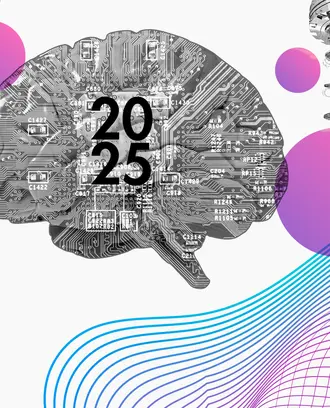Credit: Rob Dobi
While a drastic shutdown of business has been a key part of tackling the COVID-19 pandemic, the economic fallout is spiraling, with almost 10 million people filing for unemployment in the last two weeks of March and markets dropping precipitously. A key question now is how to restart the economy safely and efficiently when the time comes.
That process could hinge on digital tools and a workforce of people who are certified as immune to COVID-19, according to MIT professor Alex Pentland, the faculty director of MIT Connection Science and co-creator of the MIT Media Lab.
Pentland has drafted a white paper, “Restarting the Economy and Avoiding Big Brother,” that outlines how antibody testing could determine which workers are immune, how those workers could be certified, and what questions will have to be answered for this to happen. He is working with the United Nations and the Club de Madrid, a consortium of former democratic presidents and prime ministers, on this issue.
Restarting the economy is especially important to prevent a prolonged recession that would take a severe toll on poor and vulnerable people, Pentland, the head of big data and information privacy at the MIT Initiative on the Digital Economy, said. Repeated waves of infection, widespread unemployment, and closed or decimated businesses could further hamper a recovery.
“We are going to have to restart the economy starting from a depression-level situation,” Pentland wrote in the paper. “But how?”
Here are three concrete steps governments can take to get back to business:
Use tests to determine immunity
A “safe” workforce could be the key to restarting the economy, Pentland said. If those who recover from COVID-19 develop immunity, they could rejoin the workforce. Blood tests could be used to identify people who have coronavirus antibodies, indicating they were exposed or had the disease and now might have a level of immunity.
Other workers might qualify for the safe workforce as well. Once COVID-19 tests become more available, efficient, and inexpensive, they could be used to identify those who have recently tested negative for the disease. A safe workforce could also include people who have been inoculated once a vaccine becomes readily available.
The Federal Drug Administration has approved a new test for COVID-19 antibodies, but scientists are still researching whether having antibodies means a person is immune, how powerful their immune response is, and how long it will last.
Germany has started antibody testing, and New York governor Andrew Cuomo has said antibody testing will be a key part of restarting the economy there.
A safe workforce could be cleared to go back to work in front-of-house, customer-facing jobs. Pentland said he anticipates an immune workforce would be young and likely come from lower-income communities that are disproportionately affected by the virus. These workers are more likely to have lost their jobs, Pentland said. Widespread testing for COVID-19 and antibodies will also provide valuable information. “This sort of data makes early detection of infection and contact tracing much easier, eventually preventing successive waves of infection,” Pentland said during a recent MIT Sloan web briefing.
Certify immunity while protecting privacy
Safely restarting the economy requires a way to verify people who are immune or vaccinated, Pentland said, similar to tuberculosis test certifications required for food workers or required vaccination documentation for childcare workers. “That would allow companies, governments, and hospitals to hire workers who are safer, both for the customers but also for themselves,” Pentland said. “These people could staff consumer-facing services.” More at-risk people could perform safer back-room functions with less human contact, he said.
Pentland said there are several options for protecting privacy, including creating digital identities containing personal information that is relevant to what a person can or can’t do. Banks, credit unions, or other civic institutions could serve as repositories for health information, he said, similar to the way these institutions already hold information about people’s financial status and identity.
“A citizen can certify their health status to a participating merchant or employer in the same way their credit card or identity is certified,” Pentland wrote. He noted that people can verify their health status with their smartphone, similar to how people make mobile payments, and mobile phones can also check the status of others in the area using anonymous data. Existing technology could help make this possible, he said, like Bluetooth and Secure Multiparty Computation.
“They can also see which places are safe to go (e.g., places that are uncrowded, recently cleaned), and where the risk is higher,” he said.
Some countries are already exploring certificates, or “immunity passports,” that would allow people who test positive for antibodies to leave lockdown, though there are still concerns about testing efficacy.
China is issuing citizens QR codes on mobile phones that dictates whether they should remain in quarantine or they can leave their homes, though the system has raised concerns about government monitoring.
As always, protecting user privacy is a concern with sharing this sort of information, Pentland said. Toward that end, Pentland is part of an MIT research team working on an app called Private Kit: Safe Paths, which uses Bluetooth to let people trace their locations and see if they have had any potential exposure. It also helps people who test positive for the virus trace who they might have been in contact with. The app is free, open-source, and privacy-first, according to the creators, and available to download as a prototype.
Answer lingering questions
Pentland said there are several questions to consider around unexplored consequences — for example, will shunning or discrimination take place toward those who test positive? Creating a safe workforce would also likely require moving workers to different positions for which they might not be skilled.
To help the transition take place quickly and smoothly, government or businesses might need to provide incentives to workers, including pay raises, for moving into new or customer-facing roles.
“To help kick-start use of this process, government or large employers can provide financial incentives to visit newly open merchants, to employ ‘safe workers’ in customer-facing positions, and for merchants to obtain ‘safe environment’ certification,” Pentland wrote.
In the long run, certifying immunity might be the first step toward other certifications for pro-social or healthy behaviors, Pentland said, which would reduce costs in hospitals and lead to better health outcomes throughout the economy.



